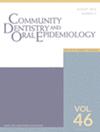Causal analyses in longitudinal observational studies in oral health: A scoping review
Abstract
Objective
Causal analysis including causal inference and causal mediation is pivotal to inform effective interventions. In modern epidemilogy, causal analysis involves four key steps: formulating causal questions, employing directed acyclic graphs (DAGs), conducting data management and selecting statistical strategies. Our objective was to conduct a scoping review to assess how longitudinal observational studies (LOSs) in dental field have integrated these four steps to contribute leverage evidence that inform oral public health interventions.
Methods
LOSs focusing on determinants of dental caries published from 2012 to 2024 were systematically retrieved from five major databases. The Joanna Briggs Institute-scoping review guidance and the Covidence application were employed to identify eligible LOSs for being reviewed.
Results
Out of the 85 eligible LOSs, none formulated causal hypothesis by applying ‘what if’ question or investigated mediation across three levels of the determinants of oral health. A minority (18 studies, ~21.2%) employed DAGs to visualise relationships among study variables, while only one third (33 studies, ~39%) clearly defined confounders. The majority (64 studies, ~75%) incorporated a time-varying feature of their data, yet only a few (11 studies) fully leveraged this advanced aspect. Among these studies that fully utilised time-varying data, more than half encountered challenges in employing robust statistics to address confounders arising from such data dynamics.
Conclusions
Dental LOSs have, to date, mostly focused on investigating associations over causality, often neglecting the four-step causal analysis and not fully utilising time-varying data. Researchers necessitate to shift their focus to causal inference and prioritise building capacity in causal analysis with a consistent four-step approach to advance the field. Studies exploring mechanisms linking determinants of dental caries across levels and leveraging time-varying data are strongly encouraged.


 求助内容:
求助内容: 应助结果提醒方式:
应助结果提醒方式:


